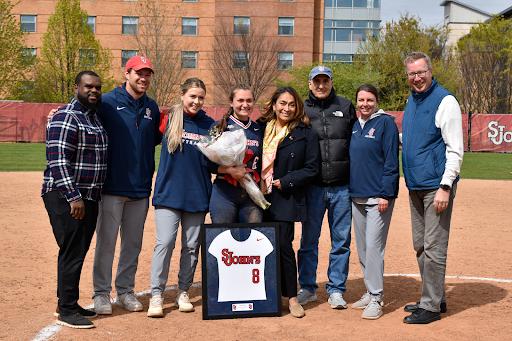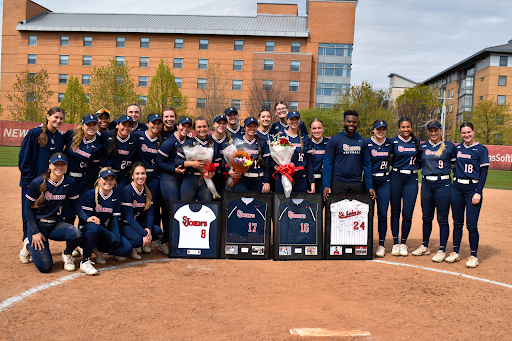College football kicked off two weeks ago. The NFL started play last Thursday. But St. John’s hasn’t been part of America’s new pastime since 2002.
By now, you probably know the reason why: the University adhered to revisions to Title IX, which suggests that a person cannot be excluded from a funded educational event based on gender.
The sports interpretation of Title IX is meant for a school’s athletic programs to reflect its male-to-female student ratio. Since St. John’s has more female students than it does male, men’s programs had to be cut, and football was one of them.
But let’s throw away the actual reason why the football team is no more. Hypothetically, let’s resurrect the program.
There are a few conditions, of course: the program has to be a Big East program and must have an actual stadium—not Da Silva Field. Every Big East school participating in football has a stadium to house its program. Our field, Carnesecca Stadium, houses 100,000 people, reasonable given the school’s location in New York City, one of the largest cities in the country, as well as the fact that Ohio State, Texas, Florida, and Penn State—some of the largest public Universities in the country as well as a handful of the most consistently dominant Division I football programs—each boast stadiums that fill to such a capacity. Our football program, for the sake of the example, is just like those.
After all, many of you have said that if St. John’s were to have a football team, you’d attend games—and after seeing
a sellout crowd at Belson Stadium for the men’s soccer team’s home opener and an equally impressive turnout two nights later, I believe you.
But even if you packed all 3,543 resident students that live on the Queens campus into a stadium, you still wouldn’t have enough to support a major college football team.
The problem isn’t necessarily an issue of talent and competition, but logistics. A major college football team requires more funding than any other athletic program due to the violent nature of the sport as well as the resources needed to maintain a high level of play. That revenue generally comes from televised games and out of ticket and merchandising sales. Unfortunately, packing Carnesecca Stadium would be a problem.
Though over 20,000 students inhabit the University during school hours from Monday through Friday, St. John’s takes a total 360 come Saturday and Sunday. The place looks more like a ghost town, rather than the small city it feels like when classes are in session. Given that football is a weekend sport, with games played mostly on Saturday, Carnesecca Stadium would look pretty empty most weekends, even if every student with housing and every person the school employs on weekends were to attend.
That said, more people live in the surrounding Jamaica area than the 3,543 students who have housing. St. John’s has, throughout its recent history, been known as a commuter school, with students traveling from all throughout New York City, Westchester, Long Island and even New Jersey. But that commute is strenuous enough during the week, and another day’s worth of commuting would feel like a sixth day of school, even if that day is used for cheering on a football team. I’m not confident enough people in the surrounding areas would make that commute, certainly not enough to fill about 97,000 remaining seats, especially on a weekly basis.
Take another look at the major schools I listed above. Ohio State, Penn State, the University of Texas at Austin, and Florida are all small-town schools despite having some of the largest student bodies in the country.
Ohio State is located in Columbus, Oh.; Penn State is located in Happy Valley, Pa.; Texas is located in Austin, Tx.; and Florida is located in Gainesville, FL. They are all known as “college towns,” which means that everything about the town is in some way connected to the University economically.
What does this mean? More apartment buildings for students to live in, more bookstores and other education-related businesses, more bars and restaurants for people to watch games, yes, but more importantly, more alumni who live in the surrounding area with financial ties to the school, either by business or booster, to come out to games and support the team.
New York City is not a small town by any stretch of the imagination, nor is its economy contingent upon St. John’s. Even Jamaica doesn’t qualify as a college town. Economically, St. John’s and New York City are independent of each other.
St. John’s is not that kind of school, and could neither stir up enough excitement nor annually bring in the revenue required to maintain a football team.














